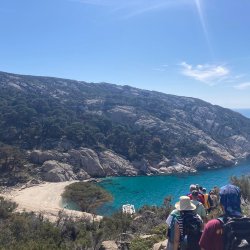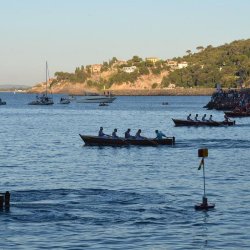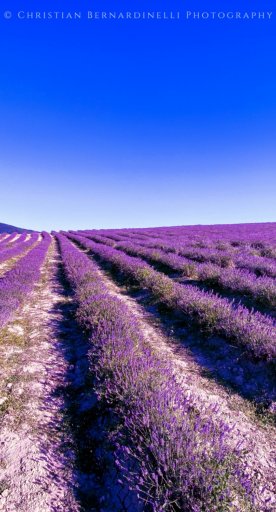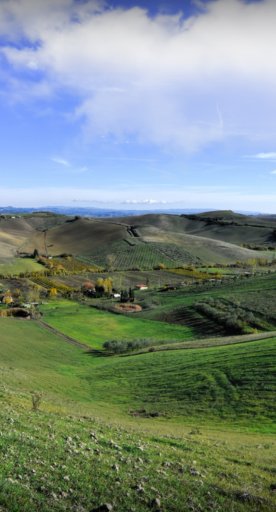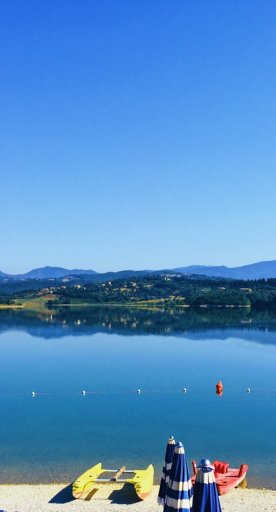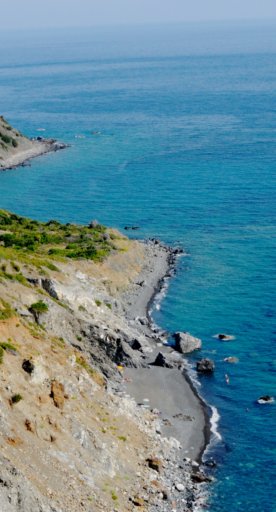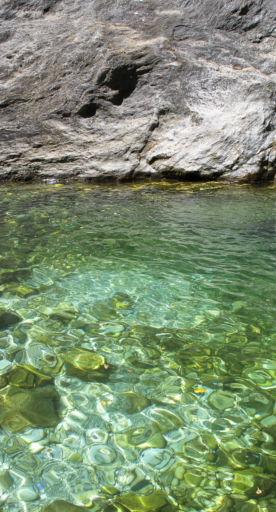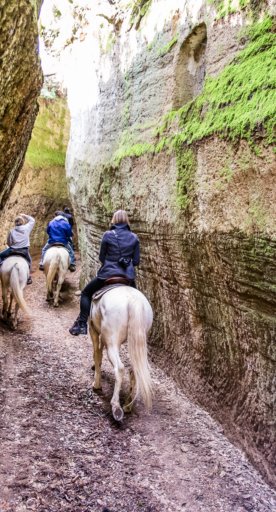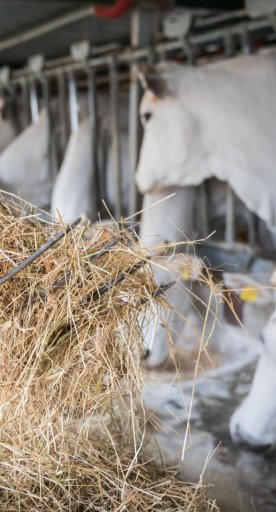Mountain vacations: the best destinations
Trekking, mountain biking, trips and relaxation: so many ideas for a summer at altitude
Outdoor activities, superb cuisine, health and wellbeing: the Tuscan mountains in summer are the perfect destination for a vacation in-touch with nature. In small groups or with the family, following easy paths or trekking routes, you can conquer the region's highest, most stunning peaks; but not only that. Tuscany's highlands offer many other opportunities and experiences. You can, for example, cross one of the longest suspension bridges in the world, and launch yourself over the void on a swing hanging from a rocky arch; you can visit the hilltowns hidden away in the valleys, and enjoy the foods that come from forest produce.
What are you waiting for? Choose your preferred mountain area, pack your bags and enjoy the adventure!
-
1.The Pistoiese Mountains
-
2.Lunigiana
-
3.Garfagnana and the Mid Serchio Valley
-
4.Casentino
-
5.Amiata
-
6.Mugello
-
7.Versilia
-
8.The Tuscan Tiber Valley
The Pistoiese Mountains

If this is the realm of snow sports in winter, in the warmer seasons it's the realm of trekking, even for children. The Pistoiese mountains, with their charming little hilltowns in Tuscany's northern reaches, have a precious natural heritage: woods, fresh air and trustworthy produce, not to mention the sweet hills, always changing colours with the seasons.
Apart from Abetone and Doganaccia, two of the most popular places for trekking, let's not forget Monte Gomito, Monte Cimone, the so-called Libro Aperto (a mountain that resembles an open book), nor Lake Nero or Lake Scaffaiolo. Footpaths and cycle routes intersect with the cultural and historic trails of the Pistoiese Mountain Ecomuseum: a diffused museum which, thanks to six thematic sections, teaches us about traditional everyday life and the ancient crafts of the whole area.
Adrenaline junkies, and indeed anyone who doesn't suffer from vertigo, can cross the San Marcello Piteglio Suspension Bridge, once used by rail workers who had to move from one side of the valley to the other. Or you can learn how ice was preserved at the Madonnina Ice House, near Le Piastre.
Lunigiana
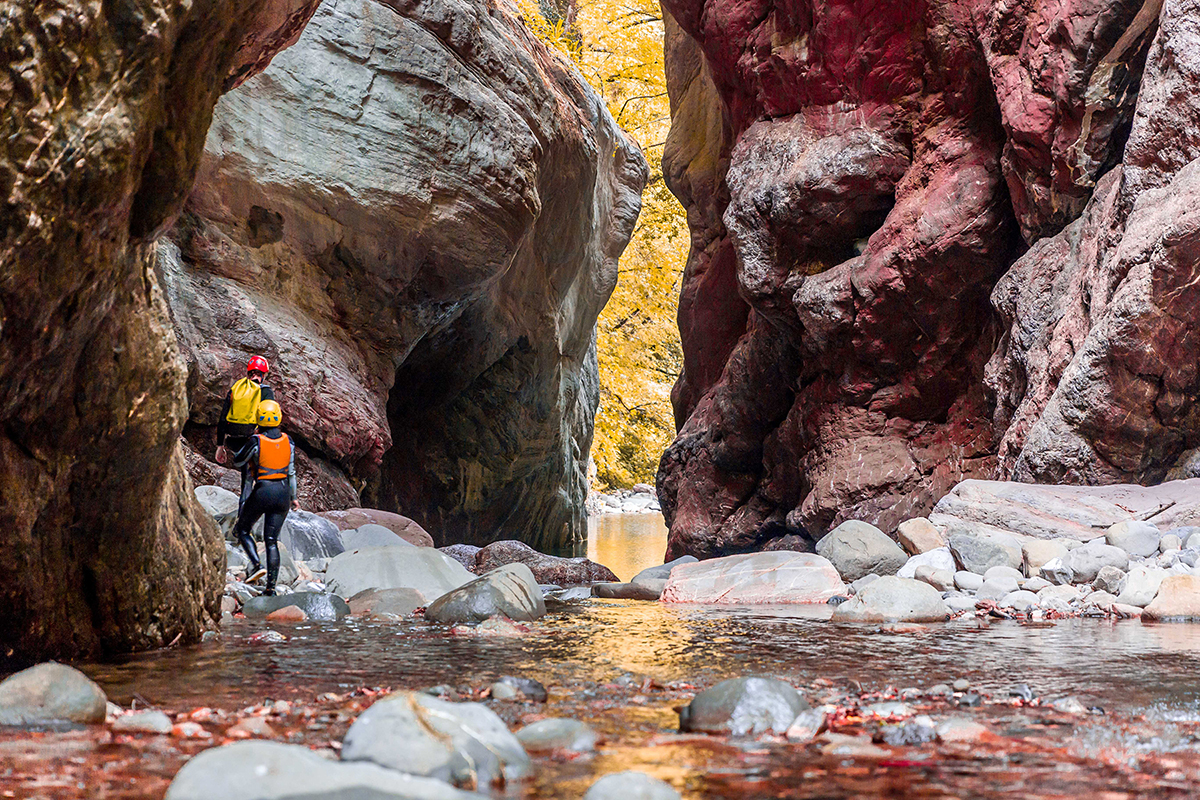
At the regional border with Liguria, you can immerse yourself in the astonishing surroundings of the Lunigiana, a land that you can discover from trekking routes and sheep tracks, through castles and medieval churches. In the municipalities of Comano, Filattiera, Fivizzano, Licciana Nardi and Bagnone, the peaks of the Tusco-Emilian Apennines rise. Here too, outdoor excursions take you through breathtaking panoramas over valleys, and you will learn about the mysteries and stories connected to the area: the stele statues, for instance, which were fashioned between the bronze age and the iron age and now are on display in a museum in Pontremoli. The regional Park of the Apuan Alps partially falls within the Lunigiana, with its unmistakeable landscape dotted with caves, woods and watercourses.
One of the most memorable parts of the Lunigiana has to be Zeri, a destination for anyone who loves peaceful, relaxing vacations, with long walks that finish with a visit to farms. A few minutes from the centre, you can visit the mountain pasture village of Formentara, an old settlement more than 1100 metres above sea level and over 500 years old. Though uninhabited, this little village is today subject to constant archaeological research. Alternatively, you could head towards the Colombara waterfall, near the path through the wood. Finally, if you want to savour the excitement of walking in a canyon, organise a trip round the Giaredo Straits, which the Gordana stream has dug out of the rock.
Garfagnana and the Mid Serchio Valley

Chestnut woods, little medieval towns, and nature. This is what awaits you if you decide to holiday in the Garfagnana, an area that lies between the central Apennines and the Apuan Alps. These mountains, rich in water and artificial lakes, will surprise you with their unique attractions. Take the Lago di Vagli, for instance: it covers the ghost town of Fabbriche di Carreggine, which in 1946 was completely submerged when the natural basin was filled. And then there is the Lago di Isola Santa (lake of the holy island), on the banks of which you will find a village half-abandoned.
Garfagnana is also home to the highest mountain in Tuscany: Monte Prato, near Sillano, which reaches 2054 metres in height.
There are caves and rock galleries aplenty round here, like the Grotta del Vento at Fornovolasco, a wonder of the underworld in the Fabbriche di Vergemoli municipality. The Orrido di Botri, meanwhile, is a true canyon, scooped out over the millennia by the flow of the Pelago stream: it has deep gorges, waterfalls and little inlets.
If, however, your passion is for mountain towns, visit Fabbriche di Vergemoli's enchanting Calomini hermitage and San Romano's imposing Verrucole Castle. Finally, you can marvel at one of the most spectacular views in the Garfagnana from San Pellegrino in Alpe.
Casentino
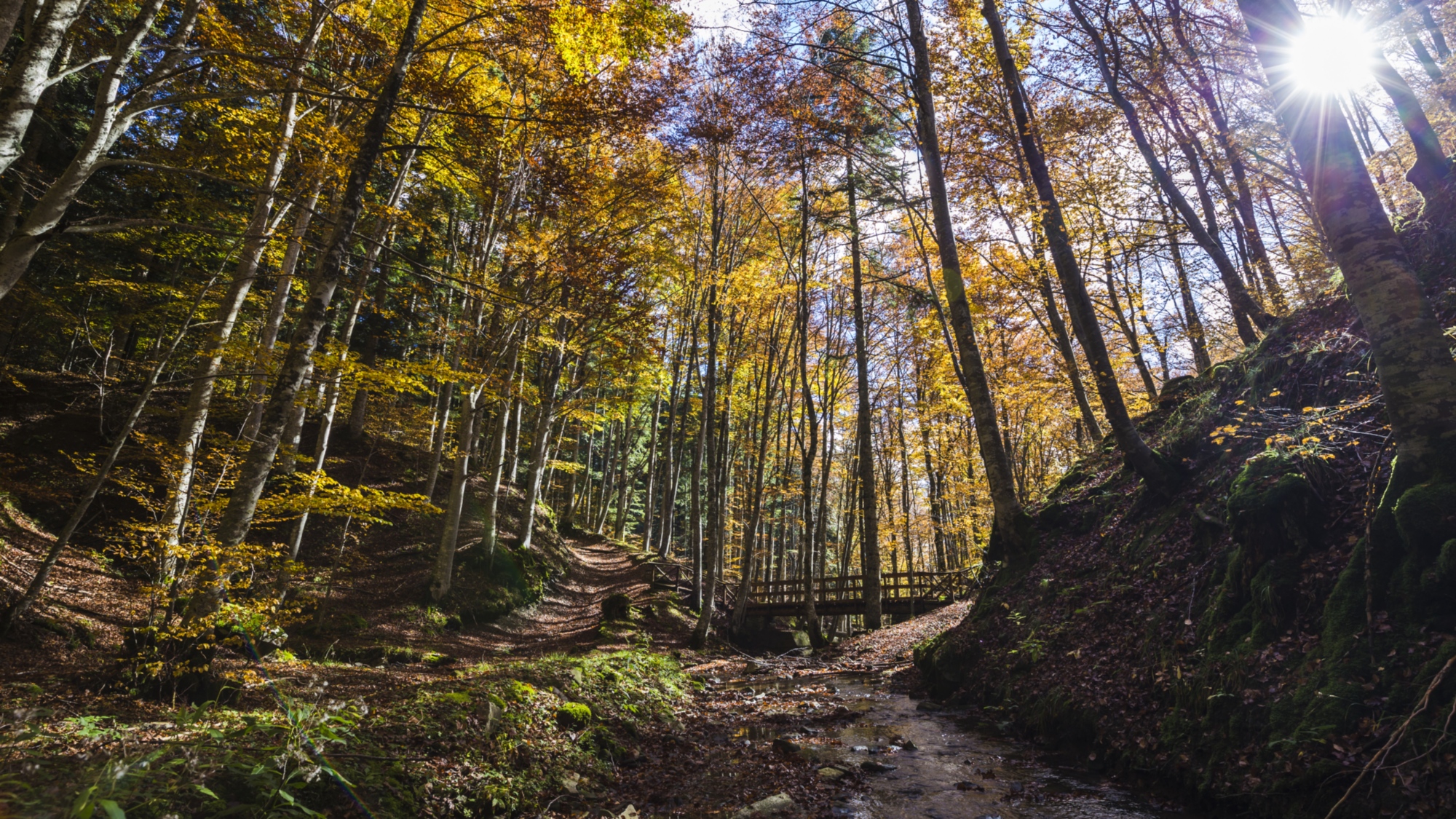
Between a hearty plate of potato tortelli and a visit to an artisan workshop that makes orange woollen clothes, the Casentino will introduce you to silent forests and places of great spirituality.
This valley, indeed, is home to many monuments of faith, including the La Verna Sanctuary, which, being where St Francis received the stigmata, has a strong Franciscan connection. This monastery lies on the far side of a forest and holds a number of precious liturgical objects, such as a gilded bronze reliquary painted by a member of the fifteenth- or sixteenth-century Florentine school, and a ceramic bust of Christ, attributed to Andrea della Robbia.
The Camaldoli Monastery also stands in the Casentino forests. You can reach it by a circular trekking route, from which you can inhale the invigorating mountain air.
Between the Casentino and the Valtiberina (Tiber valley) rise the Catenaia Alps, a mountain chain covered with oak, beech and chestnut trees. From the Pratomagno range, meanwhile, whose 1590 metres above sea level are marked by a cross, you can see where the area meets the Arno valley.
Amiata

Monte Amiata is an ancient, dormant volcano, and like all volcanoes a great energy simmers away within it. Thanks to its many watercourses, the surrounding area is ideal for aquatic sports, like canoeing. But rock climbers are also in their element here, scrambling up the cliffs with astonishing views all around them.
Trained cyclists should not miss a mountain bike ride through Amiata's most beautiful medieval towns: Abbadia San Salvatore, for example, shows you how the old mercury miners lived, thanks to its mining museum and gallery, which is staffed by former miners who never fail to involve and move you with stories of their lives, adventures and narrow escapes.
You might continue your journey towards Arcidosso, a hilltown that deserves a stop-off so you can admire the Aldobrandesca fortress. When you set off again, head for Santa Fiora, where a visit to the historic centre and the old fishmongers is definitely worth your time. Finally, have a look at Piancastagnaio, perched on top of shelf and overlooking the Paglia valley and the Via Cassia.
Mugello

Land of artists and flavours (especially chestnuts), the Mugello is a must-explore mountain area, full of stories just waiting to be told. One of its peaks is Monte Giovi, which reaches 992 metres above sea level and represents the easternmost part of the ridge that separates the Mugello from the Arno valley and the lower Sieve valley. The area has been inhabited since antiquity, as shown by Etruscan and Roman remains, and its people have always been farmers and shepherds. During the Second World War, Monte Giovi was a bastion of the Resistance and saw the formation of some Partisan groups. A cultural park has been set up in their memory, with information panels and a network of themed walking trails.
Around Vicchio, where you find the house of Giotto, you can take the Way of the Painters: a route that winds through the greenery and places of historic and cultural interest. Or you can go trekking on Monte Verruca, or rest in the gorgeous surroundings that ring Lake Montelleri.
The peak of Monte Beni, in the municipality of Firenzuola, touches 1,259 metres in height and can be reached by a mule track that starts from Covigliaio. Finally, as a cultural trail, you can visit the Mountain Folk Museum, which occupies the Palazzo dei Capitani in Palazzuolo sul Senio. The collection has objects that tell the Mugello's story, and the story of the mountain communities here.
Versilia

If you have always dreamed of taking a journey to the centre of the earth, prepare your torch and helmet: the Apuan Alps Park is waiting for you! The calcareous mountains around here hide karstic geological phenomena: some 1300 caves have been listed, of which a standout is the Antro del Corchia at Stazzema, one of Italy's deepest abysses.
Adrenaline junkies will go mad for Monte Forato, also in the Stazzema municipality. Its name comes from the unique rocky arch with a hole at its centre: this arch, 25 metres high and 32 metres wide, was formed by natural erosion. The most adventurous can dangle from it on a swing, which is set up during tours with official guides.
Alpe di Puntato, one of the Apuan Alps' last mountain pastures, is hemmed in by the Pania della Croce, Mount Corchia and Mount Freddone, and preserves traces of a life long gone with its derelict houses, paths and mule tracks, and banked earth meant for cultivation. Walking in the nearby woods, you still come across stone drying rooms, which were used in the past to make chestnut flour.
Lastly, Monte Pasquilio is worth a visit. The Gothic Line ran across it during the Second World War: the defensive line that the Germans built to halt the Allied advance up Italy.
The Tuscan Tiber Valley

The Tuscan Tiber valley takes you into mountains by turns lush and rocky. These peaks, which have inspired artists of the stature of Michelangelo, Leonardo da Vinci and Piero della Francesca, are perfect for trekking or mountain biking, horseriding or simply for enjoying the peace at high altitude.
Let's start with Sestino, a place which dates back to the age of the Ancient Romans. The land is dotted with little mountain towns and nature reserves, of which the best known is without a doubt that of Sasso di Simone e Simoncello, two enormous, fossil-rich calcareous blocks that rest upon a bed of coloured clay. Woods and meadows make up the heart of the reserve, full of maple, beech and ash trees; with a bit of luck, you will spot chamois, roe deer and foxes.
In the heart of the Apennines, where Tuscany borders Le Marche and Emilia-Romagna, you will find yourself in the municipality of Badia Tedalda, the populated heart of the Alpe della Luna Nature Reserve. Inside this protected area you will find forests of beech and Turkey oak, interspersed with old settlements. Here you might spot wolves, wild boar, countless species of birds, amphibians and insects. The most spectacular place has to be the Ripa della Luna, a rocky rise around 250 metres high in the shape of a lunar crescent, on the north slope of the Monte dei Frati, the highest peak in the nature reserve at 1453 metres. A long, long time ago, it seems that religious rites in honour of the moon took place around here.
The Rognosi mountain chain unfolds around Anghiari. This range is interesting because it is composed solely of ophiolite, a magmatic rock that nourishes some unique vegetation. Hard though it is, juniper manages to grow on it, with some examples hundreds of years old; heather and Helichrysum italicum thrive here too. This is also the only part of Tuscany where you can find Daphne odorosa.

